What is UF Wire? (Uses and Applications)
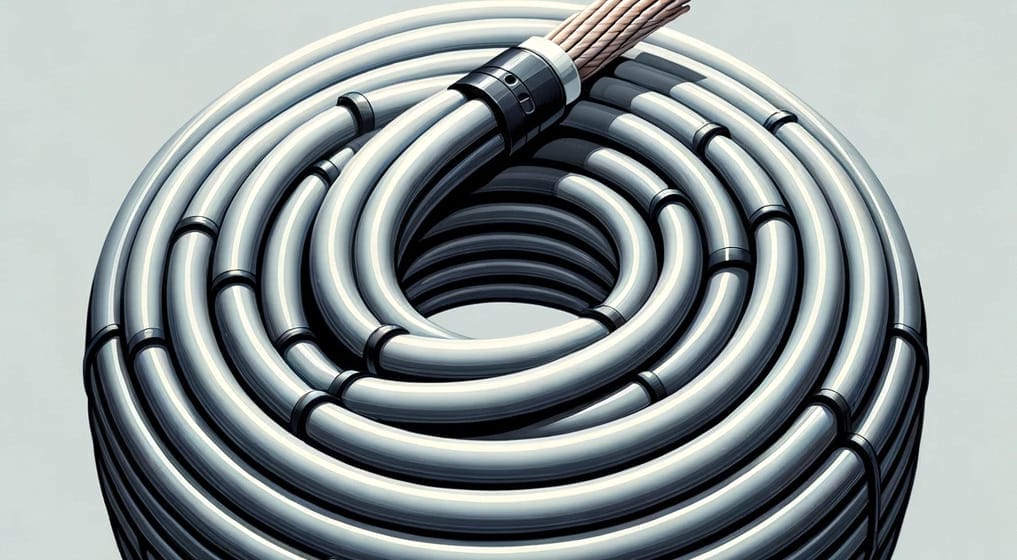
If you’ve ever found knee-deep in a DIY project or planning a major home renovation, you’ll likely come across the term ‘UF wire.’ You might be wondering, what is UF wire?
UF wire, or Underground Feeder cable, is an electrical cable specially designed for outdoor use and direct burial underground. It’s got an impressive resistance against moisture and other harsh conditions often encountered outdoors. That’s why it’s commonly used in gardens, outdoor lighting setups, and even powering well pumps.
Quick Summary: UF wire generally consists of conductors, insulation, and a protective jacket. It’s used for outdoor and moisture-prone indoor applications.
In this article, we’ll explore their structure, uses, and how they differ from other types of wiring. So stick around whether you’re an aspiring DIY enthusiast or just curious about the nuts and bolts that power your home!
Understanding the Basics of UF Wire
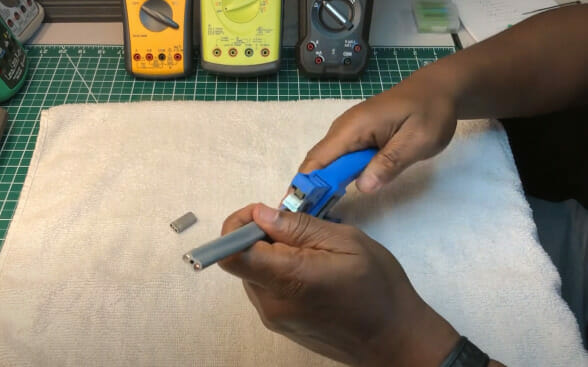
This type of wire is specifically designed to be buried directly underground without needing additional conduits (those protective tubes you usually see housing wires).
Running regular indoor wires won’t cut it in certain outdoor installations like garden lighting or power outlets for your new BBQ grill. They’re not designed to withstand harsh environmental conditions. UF wire enters the picture with its robust construction and weather-resistant properties.
The secret sauce lies in its build. Each conductor within a UF cable is coated with solid PVC insulation, which itself is then wrapped up within an overarching PVC jacket that’s sunlight-, moisture- and fungus-resistant. This dual-layer protection ensures our UF friends can safely conduct electricity while buried underground!
Most residential applications will call for either 120V or 240V-rated wires – both of which fall well within the capabilities of standard UF cables. These bad boys are generally rated for up to 600 volts!
Remember, though – safety first! Despite their ruggedness, there are still rules when installing UF wires. For instance:
- They must be buried at least 12 inches deep if unprotected.
- If protected by a GFCI outlet (a special kind that protects against electrical shocks), they only need to be six inches deep.
Always consult your local codes before starting any DIY project involving electricity.
It’s a crash course on everything that makes UF Wire tick. From its special construction to usage guidelines – isn’t it fascinating how much thought goes into something as seemingly mundane as wires?
Components and Composition of UF Wire
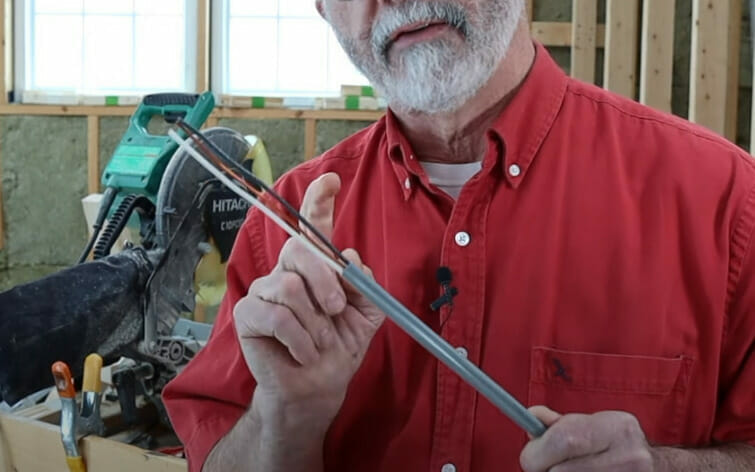
You’ll find three main components in a standard UF wire: the conductor, insulation, and jacket.
Conductor
This is typically composed of copper or aluminum and forms the backbone. It’s this metal piece that carries electricity from one point to another. In most cases:
- Copper conductors are chosen for their excellent conductivity.
- Aluminum is used when cost-effectiveness becomes critical.
Insulation
PVC (Polyvinyl Chloride) often serves as the insulating material around each conductor. This crucial layer is a barrier between the current-carrying conductor and any potential contact with it. It helps ensure safety by preventing electrical shorts or shocks.
Jacket
This is an extra layer over the insulated conductors. The jacket provides physical protection against environmental factors like moisture and extreme temperatures.
As you can see, each component has its unique role in ensuring that your UF wire functions optimally and safely! These materials are carefully selected based on their properties to form a harmonious system capable of transmitting electricity reliably under various conditions.
Isn’t it fascinating how much thought goes into what appears to be such simple wiring? But then again, when it comes to electricity transmission, there’s no room for compromise on safety or efficiency!
Applications of UF Wire
This type of electrical wire, known for its durability and resistance to moisture, is quite versatile. Let’s explore some common and perhaps surprising ways it’s used.
Firstly, UF wire is a go-to choice for outdoor electrical needs. It’s often used in lighting systems – think garden or security lights around your property. Its resilience against harsh weather conditions makes it an ideal option here.
UF wire isn’t only limited to outdoor usage. It can also be applied indoors where moisture might be an issue, like basements, bathrooms, or even kitchens! Its water-resistant feature is handy and provides that extra layer of safety we all want when dealing with electricity!
Another fascinating application for UF wire is in underground circuits. Given its full name, “Underground Feeder” (UF), this bad boy is designed to be directly buried under the ground without needing conduit (a type of pipe that protects wires).
In mobile homes and recreational vehicles (RVs), where space and weight are prime concerns, the compact nature of UF wire makes it a real winner.
From outdoor lighting systems to damp basement environments, from subterranean circuits without conduit to compact spaces within RVs – UF Wire truly shines in versatility, proving why it’s a popular choice among electricians and homeowners alike.
UF Wire vs. Other Types of Electrical Wire
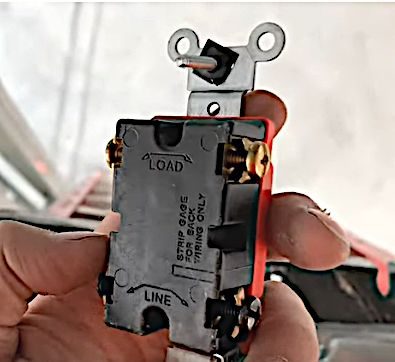
Let’s talk about UF wires and other electrical wires.
Now, let’s take the popular NM (Non-Metallic) cable as an example for comparison. While both UF and NM cables include thermoplastic insulation, there’s quite a difference when it comes to their construction and usage:
- NM Cable: Commonly used indoors for residential wiring systems.
- Can’t be exposed to sunlight or extreme temperatures
- It doesn’t have the added robustness needed for direct burial.
- UF Cable: Built especially for outdoor use.
- Moisture-resistant design means it can handle being submerged in water
- The tough exterior makes it a good choice for direct burial.
Then there are THHN/THWN wires — they’re most often run through conduits or raceways and are predominantly used in commercial applications.
So when you need to extend that circuit into your new backyard workshop or fix up some landscape lighting, remember this: Not all wiring is created equal! The environment dictates the type of wire we should use.
Essentially, the significant difference between UF wire and other electrical wires is where they’re used and how much abuse they can take from Mother Nature herself. And while we might not be able to control the weather conditions our wiring has to endure, we certainly can choose the best type suited for our needs – good old dependable UF wire or its indoor cousin, NM cable.
Think of it like this: If electrical wires were a family, NM would be the stay-at-home kind, UF would be the adventurous, outdoor-loving sibling, and THHN/THWN would be the industrious cousin always dressed in protective gear.
So, next time you’re starting an electrical project, pick the right family member for the job!
Advantages and Disadvantages of UF Wire
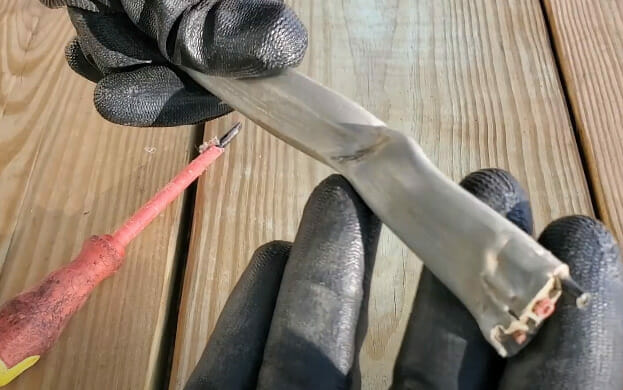
Let’s pull back the insulation on this topic and shed some light on what makes it tick.
Starting with the advantages, one of the main perks of using UF, or Underground Feeder, wire is its durability. This tough guy is designed to resist moisture, making it ideal for outdoor applications or any environment where water could be an issue. As a direct burial wire, it doesn’t even need conduit protection!
Here are a few key features I’m talking about:
- Moisture-resistant: Perfect for those damp situations.
- No conduit necessary: Less hassle during installation.
- Robust construction: It can handle rough conditions with ease.
But let’s not get carried away; there are also disadvantages. One downside of UF wire is its rigidity due to its solid build. It might be tougher than a two-dollar steak, but flexibility isn’t exactly its forte. This could pose a challenge if you’re planning on navigating tight bends or intricate wiring paths.
Additionally, while avoiding conduits sounds fantastic initially (and indeed cuts down initial install time), future modifications can be tricky.
To sum up those challenges:
- Rigidity: You might struggle with tight turns.
- Difficult modifications: Changing anything post-installation can feel like wrestling an alligator!
Choosing whether or not this type of wire fits your needs will depend heavily on your project requirements and conditions. Don’t shy away from seeking professional advice if you’re feeling a little lost in the wire woods.
Safety Considerations When Using UF Wire
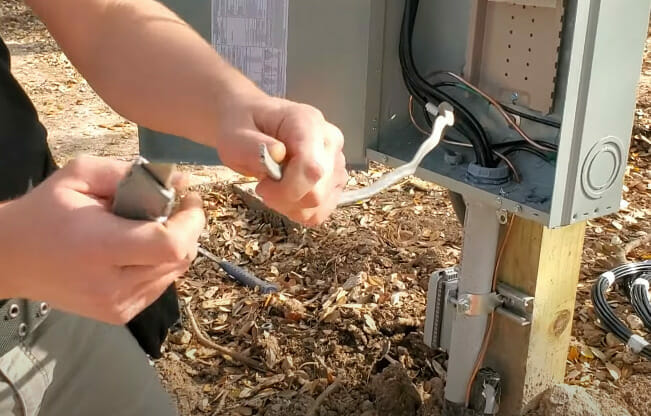
Let’s delve into the safety considerations when handling and installing UF wire. It’s crucial to remember that while using this type of wiring can certainly simplify your electrical projects, it doesn’t mean you should throw caution to the wind.
Ensure Proper Installation
If improperly installed, UF wire can pose a fire risk. To avoid this hazard, follow all local codes and manufacturer’s guidelines when installing it. It would be best if you worked with a certified electrician or a skilled DIYer familiar with electrical systems.
Use in Appropriate Environments
This means it’s designed to resist moisture and direct burial without conduit. However, if used inappropriately (for example, above ground), it may not provide the same level of protection against elements such as weather or physical damage.
Protect Against Overload
Like any other wire type, overloading UF cable can cause overheating and potentially lead to fires. Ensure circuits are correctly sized according to their load – exceeding capacity is dangerous business!
Beware of Rodent Damage
Mice and rats have been known to chew on wires, which could expose live conductors, leading to potential electrocution hazards or fire incidents!
Keep these factors front-of-mind when dealing with UF wire – safety first! Remember, electricity isn’t something we should play fast-and-loose with; always respect its power by following safe handling practices.
UF Wire Installation Procedures
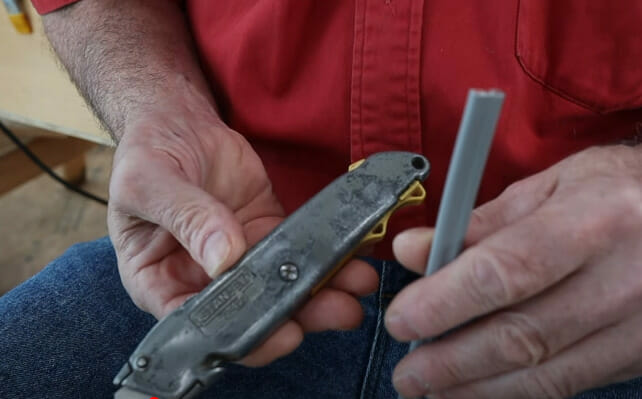
I’ll bet you’re curious about how to install UF wire properly. Well, you’ve come to the right place.
Preparation is key.
Gather all your necessary tools, like a wire stripper, utility knife, and electrical tape.
Always turn off the power before working.
Ensure the power is also turned off at the main circuit breaker. I can’t stress this enough – safety always comes first.
Installation process.
- Start by cutting your UF cable to length using a utility knife or cable cutter. Be careful not to nick the insulation of individual wires inside.
- Strip off roughly 6 inches of sheathing from each cable end with a wire stripper or sharp knife.
Get those wires connected.
You’d want to connect white to white, black to black, and bare ground wire (usually green or copper) from the UF cable to the bare ground wire in your junction box or outlet box.
Remember when I said preparation was key? Here’s where it starts paying off: Once connections are made securely with wire nuts and electrical tape, push them back into the box neatly so nothing gets pinched when you put on that cover plate.
I hope this guide helps make your DIY electrical project less intimidating than it might’ve seemed.
Common Mistakes to Avoid with UF Wire
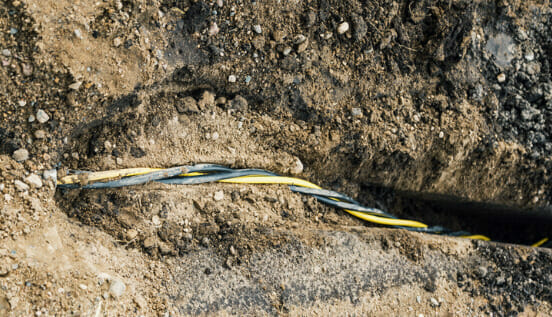
The world of wiring can be complex. And when we’re talking about Underground Feeder (UF) wire, there are some common mistakes I’ve seen folks make repeatedly.
Let’s dive in and tackle these one by one.
One of the biggies is not using conduit for protection. UF wire is designed to be buried, but that doesn’t mean it’s invincible! It still needs protection from potential damage like sharp rocks or digging critters. So don’t skip this step – it’ll save you headaches.
Another sticking point is ignoring depth requirements. It’s tempting to bury your UF wire and call it a day. However, specific depth requirements need to be met for safety reasons. Your UF wire should be at least 24 inches deep for direct burial without conduit. If you’re using conduit, the minimum depth drops to 18 inches.
Here’s a simple breakdown:
| Without Conduit | With Conduit |
|---|---|
| 24 inches | 18 inches |
Next on our list is using inadequate junction boxes. Junction boxes provide connection points for your wiring system and must meet certain criteria to ensure safety and functionality.
Lastly, neglecting local codes and regulations! Remember, each state or town may have its own rules for electrical work – so always double-check what applies in your area!
You’ll find yourself on firm ground toward successful DIY electrical projects by avoiding these common pitfalls with UF wires.
UF Wire and the Law: What You Need to Know
Working with UF (Underground Feeder) wire isn’t just about connecting wires; it’s about doing it safely and following the rules.
Electrical projects have legal and regulatory considerations that vary depending on where you live. Not only is compliance essential for safety, but it also keeps you on the right side of the law.
Let’s explore some key things you should know regarding UF wire installations.
1. National Electrical Code (NEC): The NEC is like the Bible for electrical installations in the United States. It sets the standards to ensure safety in all things electrical. The NEC provides guidelines for UF wire installations, including burial depth requirements when not using conduit. Remember to consult the latest NEC version for the most up-to-date regulations.
2. Local Building Codes: Beyond national standards, many local areas have their own building codes. These vary widely, so checking with your local building authority is crucial. They’ll tell you the specific requirements for your region.
3. Permit Requirements: Depending on your project’s size, you might need permits from your local building authority. Larger projects, like new constructions or significant renovations, often require permits. Skipping this step can lead to legal issues, and nobody wants that!
4. Licensed Electricians: Some places insist that licensed electricians must do UF wire installations. While smaller DIY projects may be exempt, knowing your local regulations is crucial. Hiring a licensed electrician for complex installations is a smart move when in doubt.
5. Depth Regulations: The minimum burial depth for UF wire can vary depending on the rules. For instance, the NEC typically mandates a minimum burial depth of 24 inches for UF wire without conduit in residential applications. But remember, local codes can differ, so always double-check with your local authorities.
6. Environmental Considerations: In ecologically sensitive areas, such as those near water bodies or wetlands, you might encounter additional regulations to protect the environment. These rules can affect how you install UF wire and may require specific precautions to prevent environmental harm.
Table: Regional UF Wire Regulations
Now, let’s simplify things with a handy table that breaks down regional UF wire regulations:
| Region | Minimum Burial Depth (Without Conduit) | Licensing Requirements | Permit Needed |
|---|---|---|---|
| National (NEC) | 24 inches | Varies by jurisdiction | Yes |
| California | 18 inches | Licensed electrician | Yes |
| Florida | 24 inches | Licensed electrician | Yes |
| Texas | 18 inches | Licensed electrician | Yes |
| New York | 24 inches | Licensed electrician | Yes |
| Environmental Areas | Varies by location | Varies by location | Yes |
Navigating UF wire installations’ legal and regulatory aspects is crucial for your safety and peace of mind. By staying informed about the rules in your area and following them diligently, you can ensure the legality and safety of your UF wire projects.
So, embrace the rules, stay safe, and keep those home improvements coming!
References
Studies:
- Underground Wires. https://www.jstor.org/stable/pdf/1761108.pdf
Organizations:
- National Electrical Contractors Association (NECA). https://www.necanet.org/
- Institute of Electrical and Electronics Engineers (IEEE). https://www.ieee.org/
Books:
- “Wiring a House” by Rex Cauldwell: This book provides comprehensive information on residential wiring, including UF wire installations.
- “Ugly’s Electrical References” by George V. Hart: A handy reference guide for electrical professionals.
Website Resources:
- Electrical Safety Foundation International (ESFI). https://www.esfi.org/
Video References:
Herrick Kimball
Benjamin Sahlstrom
The Electrician Tool Channel
S33 Electrical
